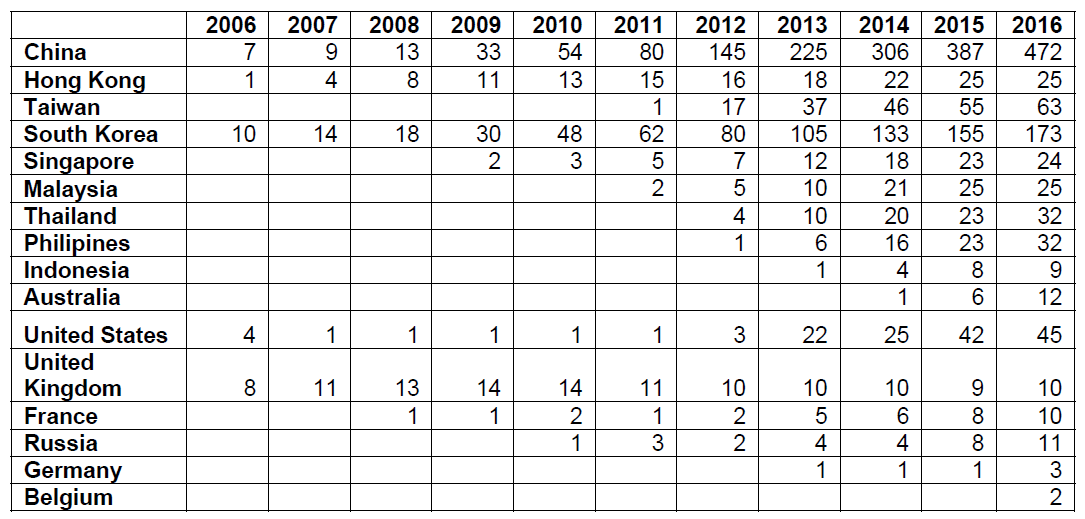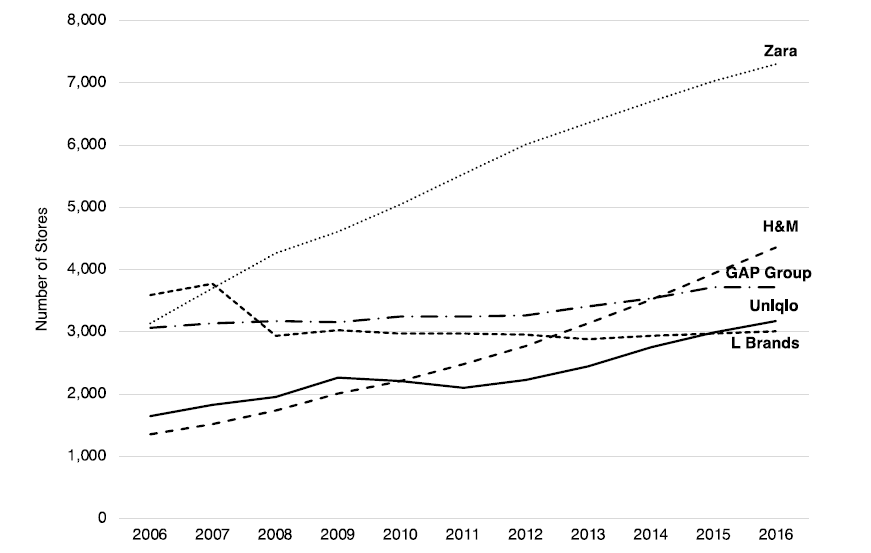Relevant Issues Presented in the Case
Uniqlo’s expansion to the U.S. market started in 2005 with three stores in the New Jersey suburbs (Lehmberg, 2018). Since then, the brand’s operation in the USA has been characterized by a mix of failures and successes, but the overall U.S. expansion is still seen as rather unsuccessful. The implementation of the value chain analysis unveils some of the key issues Uniqlo is facing. As for inbound logistics and operations, these are quite effective but still require improvement in order to increase margin. The company may need to reduce costs to attract more Americans, which may necessitate certain changes in its inbound logistics.
The primary issue the brand has to address is related to outbound logistics. Uniqlo is still concentrated on Japanese operations and conventions, but the U.S. market is different, so local customers are reluctant to buy Uniqlo clothes. Americans have not acknowledged the advantage of the value behind Uniqlo clothes and shopping experience, so the company is unlikely to meet its expansion goals if the current strategies are employed.
The list of issues to be addressed is present below (from the most serious and urgent to less serious and urgent):
- Low interest in the brand among American customers.
- The focus of Uniqlo’s management is on the Japanese model.
- A limited number of flagship stores.
- The design of the stores and products.
- Ineffective or almost non-existent online sales in the U.S. market.
- A limited number of promotional campaigns.
- The an insufficient network of local partners.
How Was Uniqlo’s Business Model Similar to and Different from the Business Models of Its Competitors?
Uniqlo’s business model has some similarities with the strategies used by its American, but numerous differences can be found. The major American competitors include GAP, H&M, ZARA, and Forever (Lehmberg, 2018). The majority of the competitors utilize the vertical integration model that is employed by Uniqlo. The Japanese brand uses a limited number of SKUs concentrating on basic models rather than fashion-based designs. Such competitors as Zara and H&M are more fashion-oriented than Uniqlo. American apparel companies mainly have a substantial number of SKUs. Similar to Uniqlo, U.S.-based rivals outsource manufacturing. At that, Uniqlo’s competitors have well-established logistic networks and a good understanding of the U.S. market.
How Was the U.S. Market Similar to and Different from the Japanese Market?
The challenges Uniqlo has had in the United States are closely related to the peculiarities of the American market. Americans, as well as Japanese customers, appreciate high quality. That is one of the significant factors they pay attention to when buying items. However, American buyers are not as quality-focused as Japanese shoppers are, and the former is less interested in buying durable clothes than being attracted by fast fashion. This fast-fashion orientation makes Uniqlo’s basic designs less attractive to Americans as well. The American apparel industry is undergoing certain transformations related to online sales growth in volumes. U. S. consumers also prefer apparel stores with a fashion-based atmosphere, while Uniqlo has more functional store layouts.
How Did Uniqlo Fare in the U.S. Market? Does Uniqlo Need to Be in the U.S. Market? Why or Why not?
Due to the peculiarities of the American market and Uniqlo’s inability to adjust its outbound logistics and marketing to these aspects, the Japanese brand was not as successful as it had been expected. The sales were not high because American customers’ needs were not met to the fullest. At that, Uniqlo should be in the U. S. market as it is the second-largest apparel market in the world. The successful entry is consistent with the company’s global strategy aimed at growth and worldwide sales. Moreover, successful operations in the USA will ensure effective globalization through increased sales and enhanced recognition. The American market will also serve as the platform for further expansion in the western hemisphere.
What are Recommendations on How to Improve Uniqlo’s Performance in the U.S. and Globally, and What are the Risks and Mitigations to the Risks Associated with Each Recommendation?
Flagship Stores
Based on this brief analysis, it is possible to develop certain recommendations to improve Uniqlo’s performance globally and in the USA. First, the brand should establish profitable flagship stores in the country (see Figure 1). The associated risks are possible due to financial constraints in the USA and globally. It is noteworthy that a failing establishment of flagship stores can even have adverse effects on the interest in the brand, so a proper marketing strategy should be developed.

The company had 45 U.S.-based stores in 2016, but the performance of these units was considerably lower than expected. The design and little awareness were the primary reasons for that outcome. Hence, it is critical to address these risks when establishing new and renovating existing stores. Flagship stores should be open to raising people’s awareness, and the corresponding promotional campaign can become a loud comeback of the brand that is now rather unpopular.
Online Sales
The Japanese brand should also increase its online sales as this market is expanding, so this strategy will help Uniqlo to improve its global performance and operations in the USA. One of the challenges the organization faces is fierce competition in the field of online sales (see Figure 2). One of the ways to address this issue is related to making Uniqlo clothes more fast-fashion-oriented. In order to achieve this goal and remain faithful to its core values, Uniqlo can add more accessories. The company can also include a specific option to create fashionable looks. Customers shopping online can be offered an online cabinet (an account) where they will be able to combine items and ‘try’ them on using their pictures.

Other risks linked to this strategy include fierce competition and delivery disruptions due to pandemic issues and the load on delivery services. In order to mitigate delivery-related risks, Uniqlo has to develop its logistics by setting up several large warehouses across the country. The development of inbound logistics will also ensure an increase in online (as well as store-based) sales. Uniqlo should arrange effective partnerships with suppliers in the USA and Central American countries.
Meeting Local Needs
One of the reasons for poor performance in the American market is the company’s inability to cater to American buyers’ needs. The organization failed to understand the peculiarity of the market or rather made limited attempts to do this (Lehmberg, 2018). The use of the strategy that worked well in Japan proved to be ineffective in the USA, so Uniqlo should reconsider this approach. Hiring American executives and managers will help the company develop a specific marketing strategy appropriate for the local market. Marketing strategies should include the extensive use of social media networks.
Case Summary that Highlights Key Marketing Principles as Reflected in the Learning Outcomes and How They Were Applied to the Case
The present case shows the benefits of using certain marketing research tools and principles. For instance, the value chain analysis is instrumental in identifying the potential advantages of a company and possible areas of concern. This case also highlights the ways markets affect the development of organizational capabilities and strategies. Uniqlo’s strategies are based on its home country’s experiences, as the company still focuses on quality, which is most valued in Japan. The model that proved to be effective in the Japanese market was viewed as the optimal approach that could be transferred to other markets. At the same time, it is necessary to remember that home country experiences can help a company gain a competitive advantage, but local peculiarities have to be considered, and local customers’ needs should be met. For instance, Japanese quality orientation is an advantage, but Americans’ preferences for fashionable designs should be addressed. Hence, organizations must balance their home country and global models or strategies to operate effectively in different regions.
Reference
Lehmberg, D. (2018). Uniqlo: Re-examining American expansion. Harvard Business Review, W18233.
